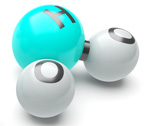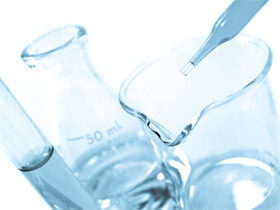The Chemistry of Reverse Osmosis Desalination Elements
|
 For over 40 years, reverse osmosis (RO) technology have been extensively used by companies throughout the world to purify water for a wide range of residential, commercial, industrial and scientific applications. Millions of people a day count on RO filtration for their drinking and bathing water, but yet even most of them don’t know what reverse osmosis is or how it works. This is a pity because reverse osmosis membrane technology is one of humanity’s most important scientific achievements in the past 60 years, and a basic understanding of the process behind the technology is something that both interesting and important.
For over 40 years, reverse osmosis (RO) technology have been extensively used by companies throughout the world to purify water for a wide range of residential, commercial, industrial and scientific applications. Millions of people a day count on RO filtration for their drinking and bathing water, but yet even most of them don’t know what reverse osmosis is or how it works. This is a pity because reverse osmosis membrane technology is one of humanity’s most important scientific achievements in the past 60 years, and a basic understanding of the process behind the technology is something that both interesting and important.
The Science Behind Reverse Osmosis Filtration
In essence, reverse osmosis is simply a very restrictive micron filter that removes a high percentage of contaminants by separating them from the water. Water pressure is used in RO systems to force water through a pressurized chamber vessel that houses a semi-permeable membrane. This membrane can isolate and filter out water contaminants down to the smallest particles and microbes at 0.0001 microns and flush them down the drain in a stream of waste water known as RO concentrate. Water molecules will pass through the membrane, and this purified water stream known as RO permeate will be collected on a different line to be used for potable water or other pure water applications. Sediment, activated carbon, and UV light systems are also used as both pre or post filters to create a multi-stage RO system that can effectively remove up to 99% of all water contaminants.
CTA vs TFC Membrane Elements
 Early RO membranes used in the 1950s were fabricated from cellulose acetate (CTA). These asymmetric semi-permeable elements were manufactured in a single step process by casting a film or fiber from a solution of cellulose acetate and solvent. As the first commercially operated reverse osmosis filters in the industry, these CTA membranes offered decent salt rejection rates of 86-94% and provided an average of 2 years of operational life.
Early RO membranes used in the 1950s were fabricated from cellulose acetate (CTA). These asymmetric semi-permeable elements were manufactured in a single step process by casting a film or fiber from a solution of cellulose acetate and solvent. As the first commercially operated reverse osmosis filters in the industry, these CTA membranes offered decent salt rejection rates of 86-94% and provided an average of 2 years of operational life.
In the ‘70s, the Filmtec company developed a new form of membrane known as Thin-Film composite (TFC), and this new element provided many advantages over CTA membranes. For one, TFC elements were designed differently and consisted of layers of dissimilar materials merged together to form a single membrane. This multi-layered approach of using different component technologies enhanced the performance and durability of the TFC membrane and made them more effective, versatile and longer lasting than CTA elements while offering superior 94-99% rejection rates. TFC membrane design quickly became the standard for the industry and is still so today.

